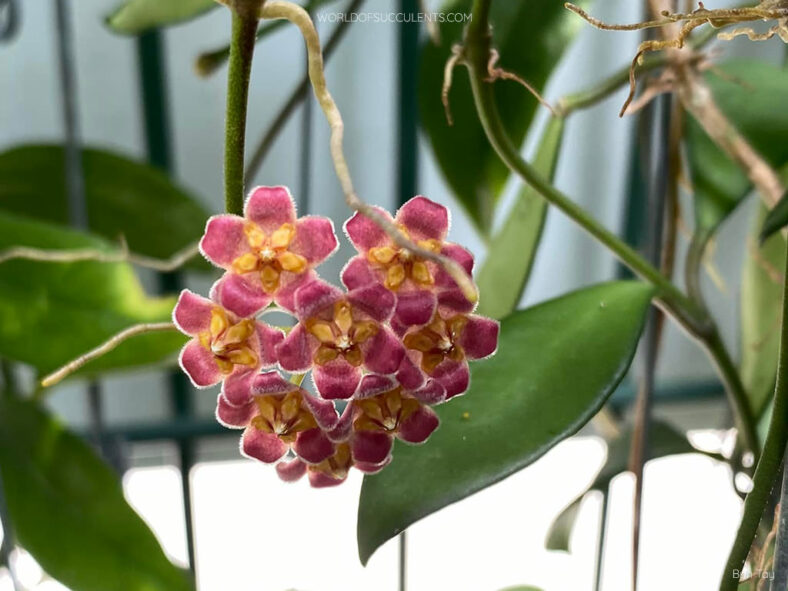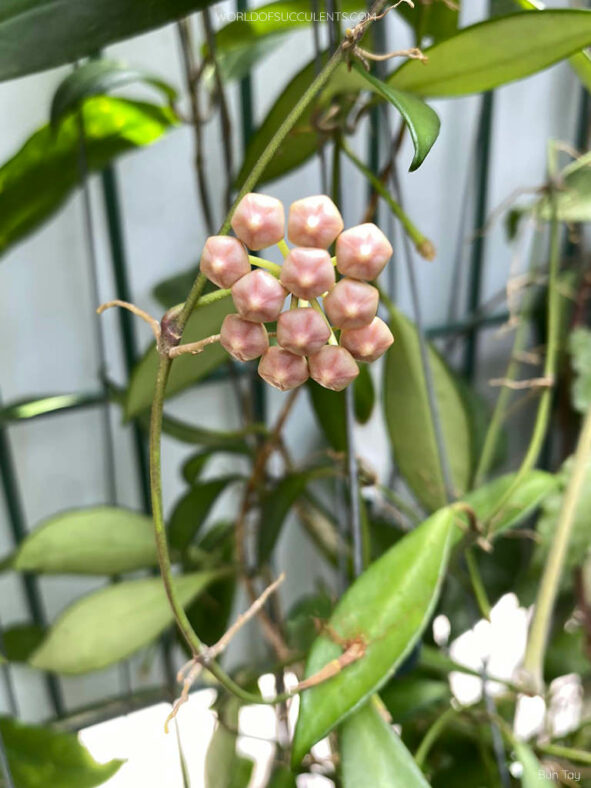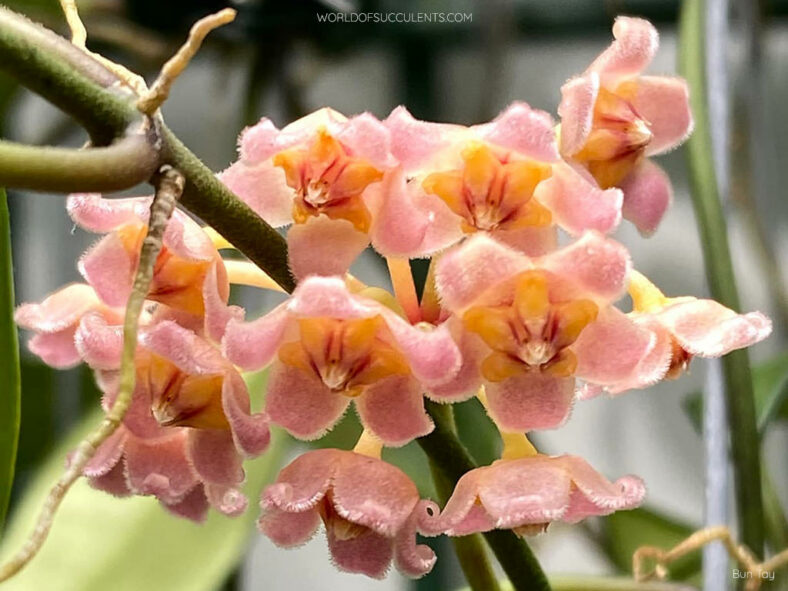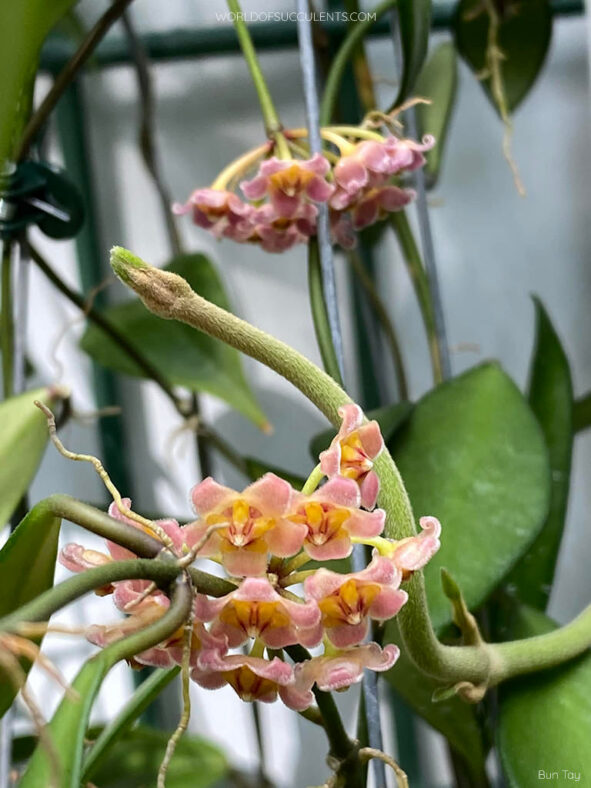Hoya davidcummingii has been in circulation as Hoya gracilis or Hoya angustifolia until 1995, when it was published in the International Hoya Association quarterly magazine "Fraterna."
Scientific Name
Hoya davidcummingii Kloppenb.
Scientific Classification
Family: Apocynaceae
Subfamily: Asclepiadoideae
Tribe: Marsdenieae
Genus: Hoya
Etymology
The specific epithet "davidcummingii (pronounced day-vid-kum-MING-ee-eye) honors David M. Cumming, an Australian Hoya collector who first collected a specimen of the species near Lake Bulusan.
Origin
Hoya davidcummingii is endemic to the Philippines. It grows as an epiphyte or lithophyte in the dense forests along the roadside in the Bulusan Volcano Natural Park, Province of Sorsogon.
Description
Hoya davidcummingii is a beautiful trailing vine with wiry stems that bear thick, dark green leaves with darker edges and lighter undersides. The stems have small roots growing on them, which help anchor the plant to a supporting structure and gather moisture and nutrients. The leaves are elliptical to lance-shaped, measuring up to 4 inches (10 cm) long and 1 inch (2.5 cm) wide.
The plant produces attractive hemispherical clusters of up to 20 star-shaped flowers that emit a sweet fragrance. The flowers can reach a diameter of 0.8 inches (2 cm) and have pink to purplish-pink corolla lobes and a yellow corona. They appear all year round and last for up to 5 days.

How to Grow and Care for Hoya davidcummingii
Light: Even if this plant can tolerate lower light levels, it may become weak and leggy if the light is too low, producing fewer leaves and flowers. Therefore, keeping it indoors in bright, indirect sunlight is best.
Soil: Well-draining soil that provides excellent aeration and does not hold too much water is most important for growing a healthy plant.
Temperature: Hoya davidcummingii thrives in hot and humid climates, so keep it away from drafty windows and doorways during the colder months. It grows best in USDA Plant Hardiness Zones 11a to 11b, with average minimum winter temperatures ranging from 40 to 50 °F (4.4 to 10 °C).
Watering: As this plant is sensitive to overwatering, soak the soil thoroughly during the spring and summer but allow it to dry out before watering again. Otherwise, you will increase the risk of root rot, and your plant will not be happy. It is relatively dormant during the fall and winter and needs only moderate watering.
Fertilizing: While Hoya davidcummingii is not a particularly heavy feeder, it can benefit from high-potassium fertilizer at half-strength every two weeks during the growing season.
Repotting: As an epiphyte, this plant has shallow root systems and needs a deep container. It also does not require frequent repotting. It prefers to be slightly rootbound, so repot it in spring only if it outgrows its container.
Propagation: Although layering is the easiest method, using stem cuttings is the most popular method for propagating Hoya davidcummingii. Using leaf cuttings can be more challenging, while starting this plant from seeds is the simplest but the most time-consuming method. For best results, take cuttings only when the plant is actively growing, and sow the seeds in spring and summer.
Learn more at How to Grow and Care for Hoya.
Toxicity of Hoya davidcummingii
Hoya davidcummingii is considered non-toxic, so having it around kids and pets is safe.
Links
- Back to genus Hoya
- Succupedia: Browse succulents by Scientific Name, Common Name, Genus, Family, USDA Hardiness Zone, Origin, or cacti by Genus
Photo Gallery
Click on a photo to see a larger version.


